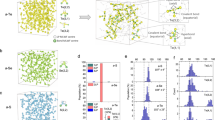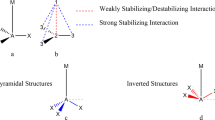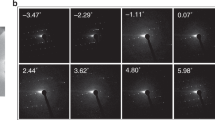Abstract
IN some early work we measured the interatomic distances of different methane and silane halides by means of the electron diffraction method. We wish to give here distances between atoms of FCCl3 and FCBr3 measured by the same method. These substances have been prepared and purified by Prof. F. Swarts. We are much indebted to him for giving us the opportunity of measuring these substances.
This is a preview of subscription content, access via your institution
Access options
Subscribe to this journal
Receive 51 print issues and online access
$199.00 per year
only $3.90 per issue
Buy this article
- Purchase on Springer Link
- Instant access to full article PDF
Prices may be subject to local taxes which are calculated during checkout
Similar content being viewed by others
References
Brockway, L., J. Phys. Chem., 41, 2, 185 and 41, 5, 747 (1937).
de Hemptinne, M., and Wouters, J., NATURE, 138, 884 (1936). Wouters, J., de Hemptinne, M., and Capron, P., Ann. Soc. Scient. Brux., 57, 25 (1937).
Author information
Authors and Affiliations
Rights and permissions
About this article
Cite this article
WOUTERS, J., DE HEMPTINNE, M. Interatomic Distances of FCCl3 and FCBr3. Nature 141, 412–413 (1938). https://doi.org/10.1038/141412b0
Issue Date:
DOI: https://doi.org/10.1038/141412b0
This article is cited by
-
Geometry of molecules and energies of atomization
Journal of Structural Chemistry (1971)
Comments
By submitting a comment you agree to abide by our Terms and Community Guidelines. If you find something abusive or that does not comply with our terms or guidelines please flag it as inappropriate.



